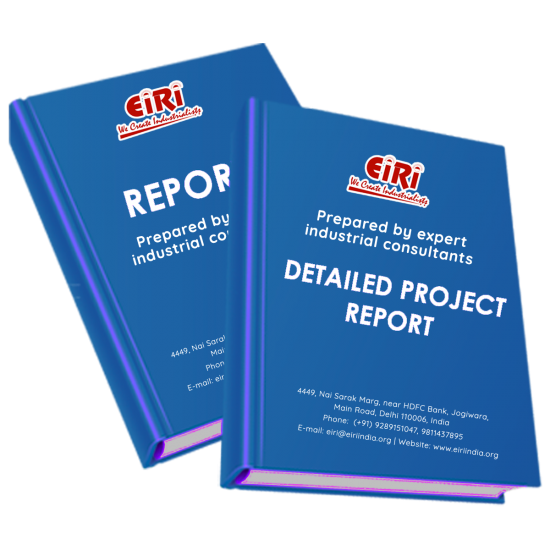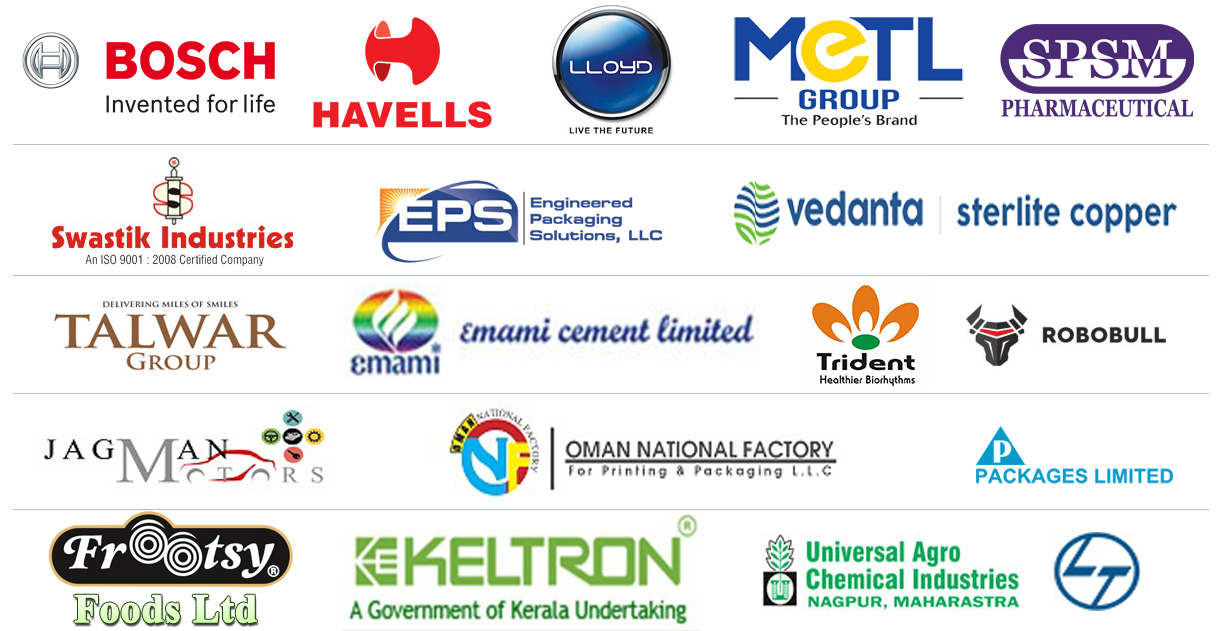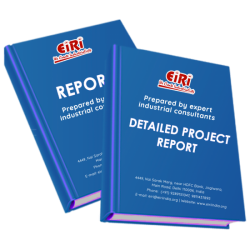Detailed Project Report on sulphur 80% wdg

- More than 40 years of experience
- Managed by expert industrial consultants
- ISO 9001-2015 Certified
- Registered under MSME, UAM No: DL01E0012000
- 24/5 Research Support
Get your quesries resolved from an industry expert. Ask your queries before report or book purchase. - Custom Research Service
Speak to the our consultant to design an exclusive study to serve your research needs. - Quality Assurance
All reports are prepared by highly qualified consultants & verified by a panel of experts. - Information Security
Your personal & confidential information is safe & secure.
Sulfur or sulphur is the chemical element with atomic number 16, represented by the symbol S. It is an abundant, multivalent non-metal. At normal conditions, sulfur atoms form cyclic octatomic molecules with chemical formula S8. Elemental sulfur is a bright yellow crystalline solid. Chemically, sulfur can react as either an oxidant or reducing agent. It oxidizes most metals and several nonmetals, including carbon, which leads to its negatives charge in most organosulfur compounds, but it reduces several strong oxidants, such as oxygen and fluorine. In nature, sulfur can be found as the pure element and as sulfide and sulfate minerals. Elemental sulfur crystals are commonly sought after by mineral collectors for their brightly colored polyhedron shapes. Being abundant in native form, sulfur was known in ancient times, mentioned for its uses in ancient Greece, China and Egypt. Sulfur fumes were used as fumigants, and sulfur-containing medicinal mixtures were used as balms and antiparasitics. Sulfur is referenced in the Bible as brimstone in English, with this name still used in several nonscientific terms. Sulfur was considered important enough to receive its own alchemical symbol. It was needed to make black gunpowder, and the bright yellow powder was hypothesized by alchemists to contain some of the properties of gold, which they sought to synthesize from it. In 1777, Antoine Lavoisier helped convince the scientific community that sulfur was a basic element, rather than a compound. Elemental sulfur was once extracted from salt domes where it sometimes occurs in nearly pure form, but this method has been obsolete since the late 20th century. Today, almost all elemental sulfur is produced as a byproduct of removing sulfur-containing contaminants from natural gas and petroleum. The element's commercial uses are primarily in fertilizers, because of the relatively high requirement of plants for it, and in the manufacture of sulfuric acid, a primary industrial chemical. Other well-known uses for the element are in matches, insecticides and fungicides. Many sulfur compounds are odiferous, and the smell of odorized natural gas, skunk scent, grapefruit, and garlic is due to sulfur compounds. Hydrogen sulfide produced by living organisms imparts the characteristic odor to rotting eggs and other biological processes. Sulfur is an essential element for all life, and is widely used in biochemical processes. In metabolic reactions, sulfur compounds serve as both fuels and respiratory (oxygen-replacing) materials for simple organisms. Sulfur in organic form is present in the vitamins biotin and thiamine, the latter being named for the Greek word for sulfur. Sulfur is an important part of many enzymes and also in antioxidant molecules like glutathione and thioredoxin. Organically bonded sulfur is a component of all proteins, as the amino acids cysteine and methionine. Disulfide bonds are largely responsible for the mechanical strength and insolubility of the protein keratin, found in outer skin, hair, and feathers, and the element contributes to their pungent odor when burned.
SULPHUR 80% WDG (EIRI-0991)Major uses of elemental sulfur are as a plant nutrient and as a pesticide, particularly as a fungicide. The sulfur can be applied as an aqueous suspension; however, it is more commonly applied, particularly in its pesticidal uses, as a dust or dry powder. The sulfur is commonly subdivided to a fine particle size, typically having at least 50 weight percent passing a 200 mesh screen for nutrient uses and having 98 weight percent passing a 325 mesh screen for pesticidal uses. The grinding is done at centralized manufacturing plants and the resulting sulfur powders are bagged and shipped to distributors for sale to the ultimate consumer. Substantial difficulties are encountered in handling the sulfur because the sulfur agglomerates or cakes into hard, compact masses. This compaction of the powdered sulfur is accentuated in the normal handling and storage wherein the bags of the material are commonly stacked to heights of about 25 bags resulting in a fairly substantial compaction force being applied to the lower layers of bags.
Cost Estimation
Plant Capacity 10 MT./Day
Land and Building (Area 2 Acre) Rs. 1.64 Cr.
Plant & Machinery Rs. 43 Lacs
W.C. for 3 Months Rs. 2.23 Cr.
Total Capital Investment Rs. 4.61 Cr.
Rate of Return 16%
Break Even Point 66%
MARKET SURVEY CUM DETAILED TECHNO
ECONOMIC FEASIBILITY REPORTcovers
EXTRACTION OF SULFUR
GRINDING OF SULFUR
DESCRIPTION
What is wetting agent used for?
DISPERSING AGENT
Modified alkali lignin sodium sulfur acid A
FLOW DIAGRAM
Sulfur storage system
DESCRIPTION
MATERIAL SAFETY DATA SHEET OF SULPHUR 80 % WDG
Occupational spill
PERSONAL PROTECTIVE EQUIPMENT
Water dispersible granul
Industrial Use
WATER DISPERSIBLE AGENT AND ITS PRODUCTIO
EXAMPLE 1
Example 2
Example 3
Example 4
Example 5
Example 6
WATER DISPERSIBLE GRANULES FORMULATIONS AND SURFACTANT SYSTEMS
DEMANDS, WHICH A PRODUCT HAS TO MEET
Physical parameters
GENERAL BRIEF INFORMATION ABOUT INGREDIENTS
MANUFACTURING METHODS AND PROPERTIES OF WDG
TESTING METHODS
PRODUCTION METHOD
PROCESS DESCRIPTION
Sulphur 80% WDG Chemical Composition
Recommendations
Cost Economics with Profitability Analysis
Capacity
Land & Building Requirements with Rates
List & Details of Plant and Machinery with their Costs
Raw Materials Details/List and Costs
Power & Water Requirements
Labour/Staff Requirements
Utilities and Overheads
Total Capital Investment
Turnover
Cost of Production
Break Even Point
Profitability
Land Man Ratio
Suppliers of Plant & Machineries and Raw Materials
Cash Flow Statement
Repayment Schedule
Interest Chart
Depreciation Chart
Projected Balance Sheet for 5 Years etc.
How to Make Project Report?
Detailed Project Report (DPR) includes Present Market Position and Expected Future Demand, Technology, Manufacturing Process, Investment Opportunity, Plant Economics and Project Financials. comprehensive analysis from industry covering detailed reporting and evaluates the position of the industry by providing insights to the SWOT analysis of the industry.
Each report include Plant Capacity, requirement of Land & Building, Plant & Machinery, Flow Sheet Diagram, Raw Materials detail with suppliers list, Total Capital Investment along with detailed calculation on Rate of Return, Break-Even Analysis and Profitability Analysis. The report also provides a birds eye view of the global industry with details on projected market size and then progresses to evaluate the industry in detail.
We can prepare detailed project report on any industry as per your requirement.
We can also modify the project capacity and project cost as per your requirement. If you are planning to start a business, contact us today.
Detailed Project Report (DPR) gives you access to decisive data such as:
- Market growth drivers
- Factors limiting market growth
- Current market trends
- Market structure
- Key highlights
Overview of key market forces propelling and restraining market growth:
- Up-to-date analyses of market trends and technological improvements
- Pin-point analyses of market competition dynamics to offer you a competitive edge major competitors
- An array of graphics, BEP analysis of major industry segments
- Detailed analyses of industry trends
- A well-defined technological growth with an impact-analysis
- A clear understanding of the competitive landscape and key product segments
Need Customized Project Report?
- Ask for FREE project related details with our consultant/industry expert.
- Share your specific research requirements for customized project report.
- Request for due diligence and consumer centric studies.
- Still haven't found what you're looking for? Speak to our Custom Research Team
About Engineers India Research Institute:
Note: We can also prepare project report on any subject based on your requirement and country. If you need, we can modify the project capacity and project cost based on your requirement.
Our Clients

Our Approach
- Our research reports comprehensively cover Indian markets (can be modified as per your country), present investigation, standpoint and gauge for a time of five years*.
- The market conjectures are produced on the premise of optional research and are cross-accepted through associations with the business players
- We use dependable wellsprings of data and databases. What's more, data from such sources is handled by us and incorporated into the report
Why buy EIRI reports?
- Our project reports include detailed analysis that help to get industry Present Market Position and Expected Future Demand.
- Offer real analysis driving variables for the business and most recent business sector patterns in the business
- This report comprehends the present status of the business by clarifying a complete SWOT examination and investigation of the interest supply circumstance
- Report gives investigation and top to bottom money related correlation of real players/competitors
- The report gives gauges of key parameters which foresees the business execution






















